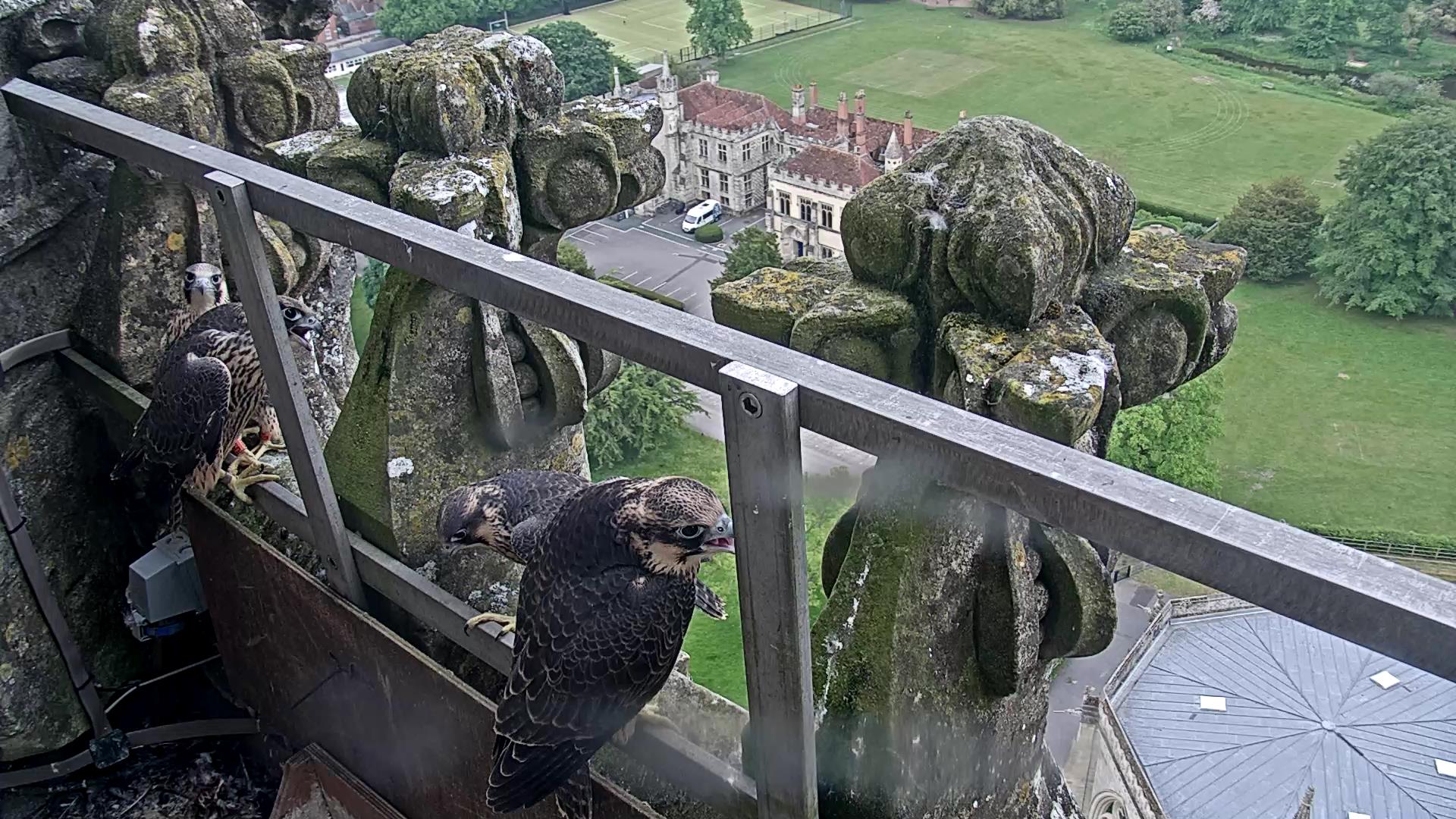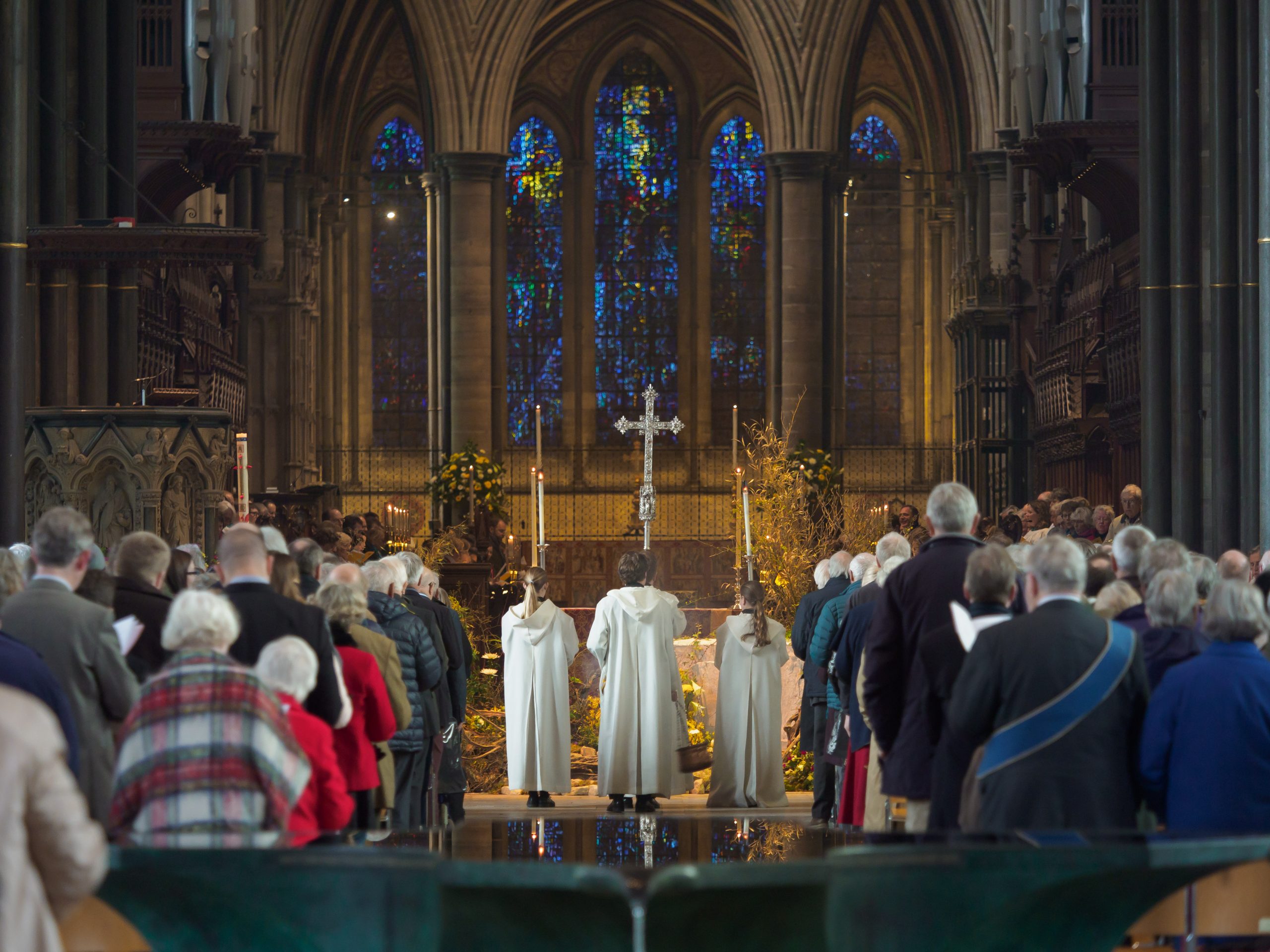8th June 2021
Peregrine Blog 7 June 2021

Oh! I have slipped the surly bonds of earthAnd danced the skies on laughter-silvered wingsSunwards I’ve climbed and joined the tumbling mirthOf sun-split clouds- and done a hundred thingsYou have not dreamed of-wheeled and soared and swung
But that your guest blogger could have penned such verse, but alas no, they are the opening lines of a poem called ‘High Flight’ and were written by an American Spitfire pilot called John Gillespie Magee Jr in 1941. He was tragically killed in a flying accident over Tangmere later that year; he was just 19 years old.
Not quite sure why, but those lines came to me on Friday 4 June whilst watching the webcam, and saw three peregrine chicks sitting in a line on top of the parapet wall above their nest box and contemplating their first flight. For the best part of six weeks they had seen, apart from the sky above, just the four walls of the southern facing walkway which was their home. Now they were seeing the outside world for the first time, and what a view over the city they had from the parapet wall. Most peregrines nesting on crags and sea cliffs see the environment around them from the moment they first open their eyes as tiny chicks; but not our birds. You could see the trio constantly looking around and bobbing their heads as if trying to make sense of this whole new world which had suddenly opened up before them.
In many ways, the ‘closed’ environment of the walkway is a great advantage to the chicks. It means that they have to be capable of at least some basic flight skills to get from the walkway onto the top of the parapet wall. Peregrine chicks on ‘open’ ledges on cliffs and so on, do from time to time attempt to fly before they are really able to do so, often with fatal results. I have over the years found the remains of several peregrine chicks beneath nests on electricity pylons where they have attempted to fly before fully able, could not to take off again from the ground. I can also recall on two occasions seeing premature flights of chicks which resulted in them falling into the sea, again as far as I could tell, with fatal results.
From 2014 when we first had chicks fledge on the Cathedral, to last year in 2020, we have only had to rescue one chick from the ground, and that individual had flown quite a way within the confines of the Close before it came to ground. I am fairly sure that this low rate of ‘grounding’ is attributable to the nest box being set down some distance below the parapet wall. Some other cathedral/church peregrine sites seem to have to regularly pick up and return grounded birds to the nest box area.
But, as they say, the best laid plans! On Sunday 6 June, a member of the public reported that a juvenile named Flo (all four chicks have names) was sitting amongst people enjoying coffee and cake in the garden of the Museum café. Phil Sheldrake who has been involved in the peregrine project from the outset contacted Gary Price, the Clerk of Works at the Cathedral, and between them they picked up Flo, put her in a box, and returned her to the nest box on the walkway none the worse for her ordeal. Within minutes she aggressively grabbed a prey item from one of the adults on the walkway so she clearly had not been too phased by her unplanned adventure. Apparently she had been in the museum garden for several hours before rescue; whether she would have taken off again of her own volition once the garden had become less busy Phil was not sure; in any case, as they say, ‘all’s well that ends well’.
I am typing this note on the afternoon of Monday 7 June, and as far as I am aware, all four chicks have now taken their maiden flight; Flo was seen to relaunch herself on the Monday morning too. Whilst enjoying coffee and cake this morning sitting outside of the Bell Tower Tea Rooms; it’s a hard job but someone has to do it, I had the pleasure of seeing two of the chicks flying around the spire with both adults watching on. This relatively cool weather with a bit of breeze is ideal for chicks to practice their flying skills as there is plenty of lift to help them. Very hot and windless weather makes for difficult flying conditions for newly fledged chicks; given the weather we have had to date this year they should have no problems at all!
The fledging in the first week in June is by far the earliest we have ever had at the Cathedral, quite why they laid eggs so early this year we do not really know; it will be interesting to see what happens next year. What we do know is that peregrine chicks tend to be reliant on their parents for food for perhaps their first eight weeks or so after fledging, although this tends to vary quite a lot. On past experience, we should see the chicks regularly on the Cathedral for about three weeks. They will be practicing their flying skills, chasing each other around, and flying out noisily from the Cathedral to meet their parents bringing in items of prey. Visitors will be treated to spectacular food passes between the adults and chicks, although in the early days the chicks are not always as skilled as they might like and a few prey items are dropped, but hopefully mostly recovered by the adults. If past experience is anything to go by, after about three weeks, the chicks and their parents often spend long periods of the day away from the building, not returning until late afternoon or early evening and then roosting. It is not really known where they go during the day, but they often seem to depart and return over the water meadows to the west, and some limited sightings suggest they may spend at least some of the day on the electricity pylons towards Netherhampton and the Salisbury racecourse.
The fledging of four chicks marks another tremendously successful year for our peregrines, and the ability to view their nest box in such high definition via the three cameras placed around the walkway has proved such a pleasure to so many people during the difficult Covid-19 lockdown. Let us hope that success of the peregrines repeats itself next year.
Granville Pictor 7 June 2021.




